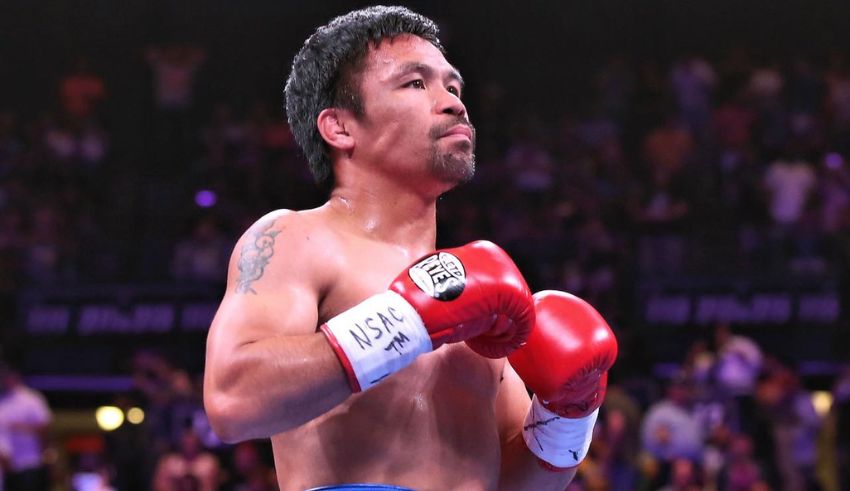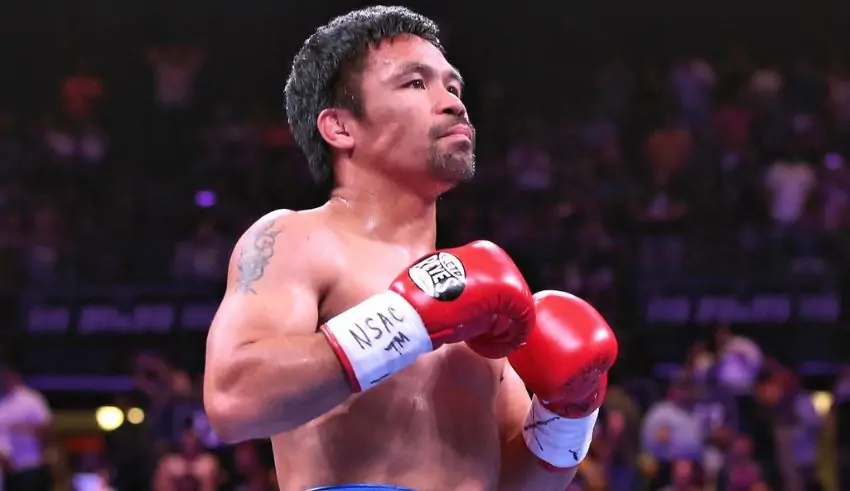

(C) Manny Pacquiao
Boxing has evolved as more than simply a sport amid the busy streets of Manila, where poverty looms big. It is a road to break out from the cycle of deprivation and a ray of hope. Inspired by the venerable Manny Pacquiao, young Filipinos are lacing their gloves, yearning a better life outside the boundaries. The transforming power of the sport has attracted many young people trying to overcome difficult conditions to create improvised gyms into sanctuaries.
From Rags to Riches
The path Manny Pacquiao took from a modest upbringing to worldwide fame is legendary. Born into poverty, he battled obscurity to emerge with world titles in several weight divisions. Filipinos, who view boxing as a ticket to success, will particularly relate to his success tale. Beyond athletics, Pacquiao’s accomplishments have come to represent optimism for millions trying to make ends meet. His narrative is a living monument to the belief that, regardless of one’s starting point in life, great success may result from diligence and will.
Boxing Gyms Every Barangay
Every neighborhood has a makeshift boxing gym echoing the thud of leather on punching bags right in its center. These modest venues foster raw ability and provide young men and women somewhere to focus their energy away from drugs and criminality. Usually former boxers themselves, coaches become mentors and life advisers. These facilities are sanctuaries where discipline, respect, and diligence are ingrained, not only places of instruction. For many young people who otherwise would have nowhere to turn for direction, the feeling of community and support discovered in these gyms may be transforming.
Health Concerns and Exploitation
Boxing has risks even if it gives some promise. Long after the last bell, boxers suffer with brain damage, cuts, and fractured bones. The physical strain of the sport can be tremendous, resulting in long-term health problems sometimes disregarded in the search of excellence. Furthermore, some promoters take advantage of young boxers, paying them minimal salaries and profite greatly. Many people are blinded to these risks by the attraction of wealth and celebrity, which fuels a difficultly breaking cycle of exploitation. The hard truth is that, without appropriate protections, boxing can cause financial and bodily ruin even if it provides a road out of poverty.
The Gender Gap
Still mostly controlled by men is boxing. Female combatants deal with limited possibilities and social shame. Women in boxing can fight for recognition and support even with their skills and will. Boxing cannot really uplifts communities unless gender boundaries are broken. Giving female athletes equal chances and empowering them would help to change the sport and motivate next generations. Boxing can become more inclusive and representational of all those who want to engage by supporting gender equality inside the sport.
Empowerment and Education
Can boxing by itself pull families from poverty? Not absolutely. Still the pillar of education is Programs combining boxing instruction with scholarships, career paths, and financial literacy classes enable young athletes to create long-term sustainable livelihoods. These programs guarantee boxers have choices when their fighting days are finished by arming them with abilities outside the ring. Education provides access to chances meant to permanently change the cycle of poverty. Learning financial management, for example, will enable athletes to better manage their income and avoid returning into poverty following the conclusion of their careers.
Government Support and Groundroots Projects
The Philippine government needs to fund talent scouting, coaching, and sports infrastructure. The government may help to develop potential from a young age and guarantee that outstanding athletes get the necessary training by giving enough resources and support. Early identification of possible champions by grassroots initiatives helps to develop their abilities and offer a safety net for their families. Building a strong support system for future boxers depends on cooperation among government agencies, nearby communities, and businesses. Since young athletes represent their nation on a worldwide scene, such initiatives can help promote solidarity and national pride.
Manny Pacquiao left legacy beyond belts and titles. It’s evidence of fortitude, will, and the force of dreams. More young Filipinos entering the ring calls for us to make sure their path doesn’t stop there. Only if we strive for their well-being both inside and outside the rings will boxing be a means of escape from poverty. Through tackling obstacles and offering all-encompassing support, we can enable young athletes to realize their goals and create a better future for their towns and themselves.
Making sure boxing fits into a larger plan including education, medical treatment, and financial possibilities will help to confirm its capacity as a means of good transformation. Though the history of boxing in the Philippines is one of promise and possibility, society as a whole must cooperate to fully realize it. Boxing may remain a potent tool for social mobility, shattering the bonds of poverty and providing young people of the Philippines alternative paths by means of constant dedication and investment.
Early Tuesday morning. The fire, which could be seen from several miles away, caused mass evacuations as the authorities fine-tuned…
OpenAI's new image creation option on ChatGPT attracted many users in a short time. ChatGPT achieved its one million user…
Yuki Tsunoda has targeted a dream podium at his home Japanese Grand Prix following his surprise elevation to Red Bull.…
Finally, it is out! Tom Holland will return to the red and blue suit as Marvel formally launches the title…
Turkish music lovers and the whole entertainment world on Sunday night were put in shock by the unexpected passing of…
The Senior Asian Wrestling Championship 2025 held in Amman closed with an exhilarating finale for India. The freestyle wrestling contingent…
This website uses cookies.
Read More